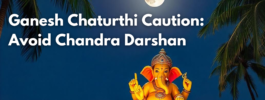Every year on Ram Navami, we celebrate the birth of Ram, a celebration shrouded in the deep mystery described by Goswami Tulsidas in Ramcharitmanas:
राम जन्म के हेतु अनेका ।
परम विचित्र एक ते एका ॥
– रामचरितमानस
“The birth of Ram is surrounded by many peculiar and mystical mysteries, one after another.”
This auspicious occasion holds the potential to fulfill our deepest desires, a secret so strange that it finds mention in ancient scriptures and tantric texts.
To harness the power of Ram’s birth on Chaitra Shukla Navami, as per local traditions, one must perform the prescribed rituals at noon, the exact moment when the royal birth is believed to have taken place, echoing the teachings of Valmiki Ramayana.
चैत्रे नावमिके तिथौ ।
– वाल्मीकि रामायण
In the month of Chaitra, on Navami day.
– Valmiki Ramayana
Goswami Tulsidas writes:
नौमी तिथि मधु मास पुनीता।
सुकल पच्छ अभिजीत हरिप्रीता ॥
मध्यदिवस अति सीत न धामा ।
पावन काल लोक विश्रामा ॥
– गोस्वामी तुलसीदास
“The ninth day, in the month of Chaitra, is pure and auspicious. The moon is bright, and there is an atmosphere of divine delight. Noon is exceedingly peaceful, creating a sacred time for the world to rest.”
– Goswami Tulsidas Ji
On the day of Ram Navami, at noon, write down your desired manifestation on paper and repeat it nine times. Your focus should be on the heart chakra or Anahata chakra during this time.
Remember, your wish must be positive and constructive as “Ram Tatva” only aids in the right things. Valmiki Ji clearly states:
रामो विग्रहवान धर्म: ।
– वाल्मीकिजी
“Ram is the embodiment of righteousness.”
– Valmiki Ji
Understanding why our focus should be on the heart chakra is crucial. The word ‘Ram’ is derived from the root ‘ram,’ meaning to delight or dwell. Those who embody positive and constructive principles, like yogis, dwell in the essence of delight, known as ‘Ram,’ as stated in the Padma Purana:
रमन्ते योगिनो यस्मिन् नित्यानन्दे चिदात्मनि।
इति रामपदेनैतत् परं बह्याभिधीयते॥
– पद्मपुराण
“The yogis who reside in eternal bliss within their pure consciousness are identified with the ultimate reality called ‘Ram.'”
– Padma Purana
Building on this, Ved Vyasa conveys that those who dwell or delight in the hearts of all are truly ‘Ram’:
सर्वेषाम् हृदये रमते स राम:।
– वेद व्यासजी
“He who resides in the hearts of all is Ram.”
– Ved Vyasa
Even the well-known tale of Hanuman revealing Ram in his heart by tearing open his chest symbolizes this profound truth.
To manifest our positive and constructive wishes, we need to write them down, focus our attention on the heart chakra, repeat the wish nine times, and then chant the Ram mantra for a duration of one auspicious moment, which is equivalent to 48 minutes.
It’s important to remember that Ram is not exclusively a deity in Hinduism; the word “Ram” is a highly powerful mantra that resonates within us and throughout the entire universe. The Ram mantra serves as a password that establishes our connection with the Universal Mind or the divine, enabling the fulfillment of our desires and ensuring a positive transition even after death. Even today, during funeral processions, the chant of “Ram Bolo Bhai Ram” echoes as the underlying reason lies in this very connection.
The Ram mantra transcends all religions, as Goswami Tulsidas Ji beautifully explains the word “Ram.” Comprising “r”(र) + “aa”(आ) + “m”(म), where “r” signifies fire (Agni), “aa” represents the sun (Aditya or Surya), and “m” symbolizes the moon (Chandra). By chanting “Ram,” we activate all universal principles that provide illumination and guidance.
Consider this couplet by Tulsidas Ji:
बंदउँ नाम राम रघुबर को ।
हेतु कृसानु भानु हिमकर को ॥
– तुलसीदासजी
“I worship the name of Ram, the chief of the Raghus,
The cause of the fire, the sun, and the moon.”
– Tulsidas Ji
Hence, the Ram mantra is not bound to any particular faith; any individual can activate universal energy by invoking the name “Ram.”
The Chaitra Shukla Navami holds favorable cosmic alignments for wish fulfillment. Each year on this day, between 12:00 PM to 12:48 PM, chanting your wish aloud or silently nine times while focusing on the heart chakra can ensure the fulfillment of your desires if you recite the Ram mantra.
In the Ram Raksha Stotra, Lord Shiva tells Goddess Parvati that he continually chants the Ram mantra. The name “Ram” is equivalent to thousands of names, easy to pronounce, and highly effective. Concluding with this mantra from the Ram Raksha Stotra:
राम रामेति रामेति रमे रामे मनोरमे ।
सहस्रनाम ततुल्यम् रामनाम वरानने ॥
– रामरक्षास्तोत्र
“Ram Rameti Rameti Rame Rame Manorame,
Sahasranama Tattulyam Ramnama Varanane.”
– Ram Raksha Stotra
Shubham Bhavatu.







